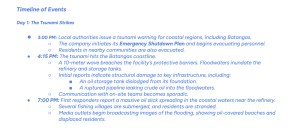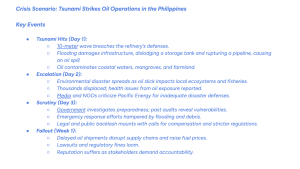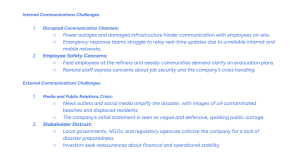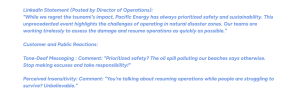The clock is ticking. You’ve got a deadline to design and prepare a simulation or tabletop. You’ve been inundated with ideas, or maybe you're stuck on where to start? Have you thought about using AI to write crisis scenarios?
AI can help shrink that blank page and stop the dreaded blinking of the cursor.
ChatGPT is a versatile tool for crafting detailed crisis scenarios across a variety of industries and situations. ChatGPT’s ability to understand context, adapt tone, and incorporate specific details makes it a great resource for scenario development.
As a business we’re not yet convinced about the ability of ChatGPT to write really bespoke or nuanced scenarios. But we’re experts at that, so it doesn’t matter.
However, if you need to quickly produce scenarios in-house, ChatGPT can create realistic and actionable scenarios. Different prompts shape the output, such as:
Here are a few of our own experiments to help you get thinking about prompts.
A small idea
Ask ChatGPT: Write me a crisis scenario for an oil company facing a natural disaster:
If you need a starting point, you can begin with a simple request, with little information other than the theme of the scenario.
Thoughts: The engine will provide a well rounded scenario, but it’ll be generic, with little development because it isn’t being provided any specifics or angles to take.
Example output:

A detailed idea
Ask ChatGPT: Write me a crisis scenario for an oil company facing a tsunami in the Philippines
If you provide additional details about the scenario, you can receive a far more tailored and developed response. Adding specifics such as the location and natural disaster type, allows the system to generate:
Thoughts: However, the data it provides won’t be personal to your scenario unless you provide it. It will give you its own names, specific date and specific statistics.
Example output:

Offering adjustments
Ask chatGPT: Make this shorter, highlighting only the key points
ChatGPT allows you to adjust the structure, whether that be bullet point format, developed sentences, or a summary. Shortening is great if you’re looking for an outline that you wish to develop yourself, or you want to add your own specifics. On the other hand, if you haven’t been provided with enough information, it can expand the output.
Thoughts: ChatGPT will naturally answer in a list format, often with bullet points too, unless told otherwise. The engine does struggle when asked to do this. This is one of the engine's biggest downfalls, so it’s important to be aware of this and acknowledge that you may have to reformat some of the structure yourself too.
Example output:

Taking a specific angle
Ask ChatGPT: Write me a scenario focusing on the impact on internal and external communication of an oil company faced with a tsunami in the Philippines
Refining the prompt to focus on a specific angle will significantly enhance the output. Specifying the perspective, theme, or area of concern, such as logistics, communication, or stakeholder impact will guide ChatGPT to craft a scenario that aligns more closely with your objectives.
Thoughts: The engine struggles to provide examples that have a multitude of focuses, so whatever angle you provide, be prepared that it will solely focus on this. If you need a mixture of angles, you may need to combine them yourself.
Example output:

Creating subthemes and specific examples
Ask ChatGPT: Write me a scenario focusing on the impact on internal and external communication of an oil company faced with a tsunami in the Philippines (including negative social media attention)
You can develop a theme further by asking it to focus on a subtopic. For example, rather than just communications, you could ask it to include specific examples of forms of communication, such as social media.
Thoughts: Because this is a sub theme, the engine is able to provide both angles in prompt. The engine works better when you focus on a specific theme, and develop it.
Example output:

Focusing on a specific angle
Ask ChatGPT: Show me an example inject in relation to this where a director makes a statement on LinkedIn which is badly received by customers
Once you’ve defined your specific angle and focus and refined the scenario to your liking, you finish up by requesting examples of how the scenario could look in real life. For instance, we asked ChatGPT to provide an example statement based on the information it was given, along with various ways the public might react negatively.
Thoughts: You should ask for examples after you've provided information on your scenario. The more developed and detailed your scenario is before you ask for an example, the more accurate it will be. The engine uses the information it’s been provided previously to craft its examples.
Example output:

ChatGPT is an extremely effective tool for writing scenarios due to its adaptability, breadth of knowledge, and ability to deliver tailored outputs. However, the outputs it provides will vary largely, depending on the prompts it is given.
Read our resource: Using AI in crisis exercises and emergency drills